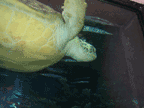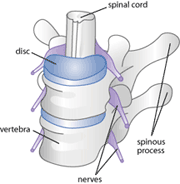| PART V OF VI
JUNE 6, 2005 
please:
pontificate
educate
illustrate
commentate (oh yeah)
and/or submit
by emailing us at tscq@interchg.ubc.ca
ASPARAGUS, STINKY PEE, AND SCIENTIFIC CURIOSITY
By Willow King
DATING OILY ROCK
By David Secko
THE GIRAFFE: A FAVOURITE TEXTBOOK ILLUSTRATION OF EVOLUTIONARY THEORIES
By Richard Peachey
RESURRECTING DAMAGED NEURONS: ARE WE FIGHTING A HOPELESS BATTLE?
By Melvin Kwok
ELSEWHERE AND OVERHEARD
by Caitlin Dowling
| | | | 
Dear Reader,
In a nonchronological theory of literary history, T.S. Eliot proposes a simultaneous existence and order of all written art. This manifests itself in the evolution of a continuous string of exposition so that earlier work is always being altered through the introduction of later work. Perhaps this is personified in a Palimpsest. As writing materials were not readily accessible in ancient Greece, it was commonplace to wash or scrape a piece of parchment or vellum, and reuse it. Infra-read and digital enhancement techniques employed by modern historians can recover the erased text to reveal older works. In this way, Palimpsests subvert the concept of author as sole originary, much in the way Eliot redefines the order of new work into the pantheon of “existing monuments” by deferring significance to an infinite sea of previous sources.
This is how we came to know Archimedes. Hidden in layers of liturgical writing, a Method was revealed in a hybrid of mathematics and physical phenomena. Codes in a codex of religious rites to fill in the lacunae of imagination and curiosity.
We at The Science Creative Quarterly are looking for modern and metaphysical Palimpsest writers, something to make us jump out of the bath and run around naked and screaming.

DEATH: AN INTERDISCIPLINARY ATTEMPT AT A DEFINITION
By Justin Kahn
(1: Holding the Tail)
The mouse is shaking his head and tail as if he is saying no, no, no. Honest, he is.
Yesterday, I couldn’t do the mouse in, but that was yesterday. I’ve learned to do other things that I didn’t enjoy. Annihilating a mouse is a yet another one of those unpleasantaries, that I must own up to. Killing mice is a part of life and accepting life is a part of growing up, so it follows that making this mouse give up his ghost is a part of my maturing process. Besides, death is happening everywhere, I think.
<more>

ASPARAGUS, STINKY PEE, AND SCIENTIFIC CURIOSITY
By Willow King
I was recently enjoying a nice dinner with a few close friends of mine. Our conversations are often less than delicate, so it was no surprise that talk soon became a little tactless. The subject turned to the unpleasant yet inevitable consequences of our meal that would visit each of us within a few hours. No, we weren’t talking about beans (the so-called “musical fruit”), but about asparagus, a seemingly benign green delicacy that goes especially well with hollandaise sauce. Strangely, one member of our group had no idea what we were talking about, despite describing asparagus as her favourite (and also oft-consumed) veggie.
<more>

TRASH TALKIN' AT THE AQUARIUM
By Christopher Monks

Wut up, tortoise? You think you're all that 'cause you can swim really well and stuff? Well, sorry to disappoint you, son, but I can swim really well, too. Sucka. I need to wear water wings, on account I'm scared of deep water, but that's still swimming. So bite me, fool.
<more>
DATING OILY ROCK
By David Secko
The giant oil sands of Alberta finally have a date. And it’s a lot older than anyone expected.
David Selby and Robert Creaser, from the University of Alberta, recently put an age of 112 ± 5.3 million years ago for the migration and accumulation of oil in the Alberta oil sands – a date over 60 million years earlier than previously thought.
Although, the date isn’t the first to be done on the sands, it’s the first in the world to be done with such accuracy.
<more>
2ND LAW OF THERMODYNAMICS
By Claire Salvador
eyed with atlantic possibilities
far beyond our sensibilities
a depth so indigo
starfalls time in a recycled surge and flow
<more>

THE GIRAFFE: A FAVOURITE TEXTBOOK ILLUSTRATION OF EVOLUTIONARY THEORIES
By Richard Peachey
High-school biology texts regularly present Darwin’s theory of evolution in contrast with Lamarck’s earlier explanation, and the organism most often used to illustrate the difference between the two views is the giraffe (e.g., Creager et al., pp. 233-240). Lamarck, it is said, told a story of giraffe necks becoming longer as the animals tried to stretch their necks to reach food (Law of Use and Disuse). The longer necks acquired in this way would then be passed on to their offspring (Law of Inheritance of Acquired Characteristics). Continued stretching over the generations led to today’s long-necked giraffes. Darwin, on the other hand (it is said), proposed that early giraffes had necks of different lengths, some longer and some shorter (Variation).
<more>

Spinal cord injury (SCI) has been documented throughout history. Early physicians described patients with this affliction to be conscious and aware yet unable to innervate their limbs. Up to the mid 1960s the proper course of treatment for SCI was to stabilize the spinal cord to avoid further injury. Repair, however, was deemed impossible.
<more>
AFRICAN LION FAMILY OBJECTS TO THEIR PORTRAYAL IN RECENT DISCOVERY CHANNEL DOCUMENTARY
By Steve Caldes
Papa Lion (Carl)
First off, that tree we were lying around in the shade by, that wasn’t even our tree. The producers literally brought in that tree and told us it was going to be our new tree. They said our tree—the tree we’ve lay under for years—“didn’t have a river view” and was “a little smaller than what we were looking for.” This was all said to me in front of my kids, I might add. Real class act that Discovery Channel!
<more>

ELSEWHERE AND OVERHEARD
By Caitlin Dowling
"This is the first human-poultry interaction system ever developed."
Professor Adrian David Cheok who has been developing a system to enable people to stroke chickens over the Internet. I’m serious. (ananova.com)
"I've smelt one and tracked several since then and you cannot come much closer than that”
The fact that the Tasmanian "tiger" was officially declared extinct nearly 70 years ago does not deter Col and his fellow tiger hunters one bit. (BBC News)
<more>

THE GALLON CLUB
By Jonathan Cohen
Today, when I gave blood, the petite, Hispanic technician informed me that I was now a member of the Gallon Club. She explained that I had made eight visits to the blood center over the years, and, having given eight pints, was now in the ranks. Opening a white file cabinet, she removed a gaudy gold plastic pin in the shape of a drop of blood. It was emblazoned with a red cross on a white field, and in nearly invisible writing below the insignia, it said GALLON (1) DONOR. I graciously accepted the honor. Now, however, I was curious about “the rights and privileges appertaining thereto.”
<more>
| | | | For those that prefer a print version, please download our beautiful pdf file.
(part i pdf)
(part ii pdf)
(part iii pdf)
(part iv pdf)
home (again)
about (us)
archive (of stuff)
submissions (or suggest)
notes (on masthead)
bioteach (.ubc.ca)

DEATH: AN INTERDISCIPLINARY ATTEMPT AT A DEFINITION
By Justin Kahn
TRASH TALKIN' AT THE AQUARIUM
By Christopher Monks
2ND LAW OF THERMODYNAMICS
By Claire Salvador
AFRICAN LION FAMILY OBJECTS TO THEIR PORTRAYAL IN RECENT DISCOVERY CHANNEL DOCUMENTARY
By Steve Caldes
THE GALLON CLUB
By Jonathan Cohen
|





